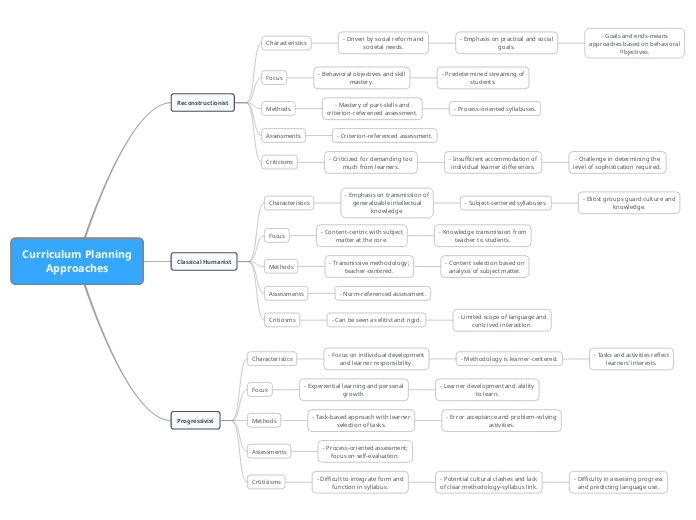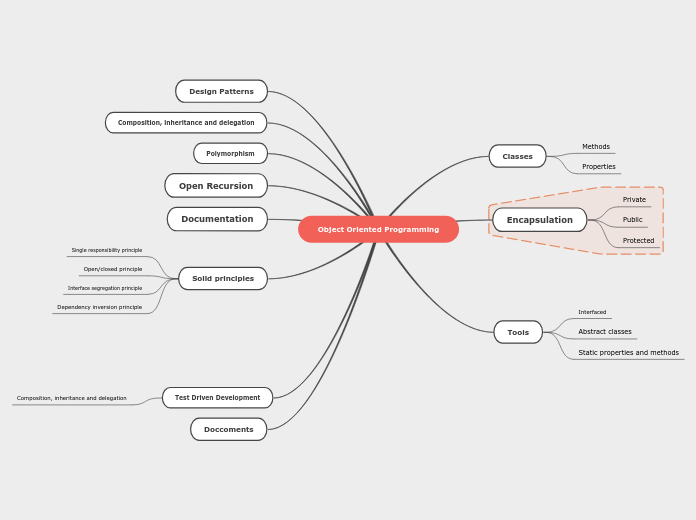Curriculum Planning
Approaches
Progressivist
Crtiticisms
- Difficult to integrate form and
function in syllabus.
- Potential cultural clashes and lack
of clear methodology-syllabus link.
- Difficulty in assessing progress
and predicting language use.
- Process-oriented assessment;
focus on self-evaluation.
- Task-based approach with learner
selection of tasks.
- Error acceptance and problem-solving
activities.
- Experiential learning and personal
growth.
- Learner development and ability
to learn.
- Focus on individual development
and learner responsibility.
- Methodology is learner-centered.
- Tasks and activities reflect
learners' interests.
Classical Humanist
- Can be seen as elitist and rigid.
- Limited scope of language and
contrived interaction.
- Norm-referenced assessment.
- Transmissive methodology;
teacher-centered.
- Content selection based on
analysis of subject matter.
- Content-centric with subject
matter at the core.
- Knowledge transmission from
teacher to students.
- Emphasis on transmission of
generalizable intellectual
knowledge.
- Subject-centered syllabuses.
- Elitist groups guard culture and
knowledge.
Reconstructionist
Criticisms
- Criticized for demanding too
much from learners.
- Insufficient accommodation of
individual learner differences.
- Challenge in determining the
level of sophistication required.
Assessments
- Criterion-referenced assessment.
Methods
- Mastery of part-skills and
criterion-referenced assessment.
- Process-oriented syllabuses.
Focus
- Behavioral objectives and skill
mastery.
- Predetermined streaming of
students.
Characteristics
- Driven by social reform and
societal needs.
- Emphasis on practical and social
goals.
- Goals and ends-means
approaches based on behavioral
objectives.









